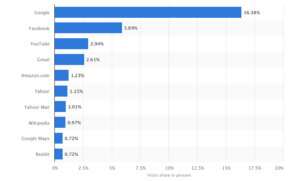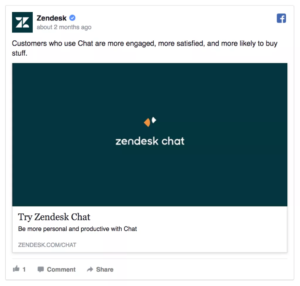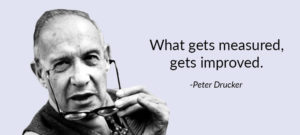Let’s face the facts, marketing in the eCommerce space is difficult. Ads are getting more and more expensive. Customer Aquisition Cost’s are rising and the unit economics are not looking so good.
Simply put, managing all this can give even the most experienced marketing teams and marketers headaches. With so many choices, brands and companies fighting to get noticed, the question is:
What can I do in 2019 to grow my eCommerce business? Performance Marketing might just be the answer!
Nowadays we track and optimize everything from our steps and calorie intake to our sleep patterns and location. So it only makes sense that you are tracking and optimizing marketing results for your eCommerce business. Performance marketing will leverage tactics to understand the how, when, why and where for all of your marketing budgets.
In our complete guide to performance marketing for eCommerce, you’ll learn all the steps you need to launch your own effective performance marketing strategy. If this is your first introduction to performance marketing, you are in for a treat! Please reference our marketing glossary as often as you need.
What is performance marketing?
To put it simply, performance marketing is digital advertising that can be clearly measured and evaluated in real-time. This means leveraging channels like Google Ads, Facebook, Instagram, and others to create trackable marketing that allows you to make effective decisions based on concrete data gathered from your actual market.
Performance marketing at its core is made of 2 parts: acquisition and optimization. Keep reading and we’ll tell you how to effectively use both.
What is performance marketing for eCommerce?
Performance marketing for eCommerce is using strategic digital advertising tactics to drive online sales. It is especially critical for eCommerce and DNVB’s(Digitally native vertical brand) to use performance marketing strategies because the customer is already online. This means that the barrier to get them to click over to your site is greatly decreased.
You can then leverage the data to determine where and when your customers are hanging out online and how to effectively reach them. For example, if your eCommerce business sells basketballs and you know that your target customer is in their 20’s, lives in the US, is a frequent online shopper and is part of a basketball league, you could set up Facebook ads to target them specifically. From this, you can determine other attributes shared by customers who purchase and then optimize your ads to get even closer to the people you know will convert to customers.
A DNVB cannot go without this type of performance marketing because they sell online. Their customers are online, their brand is online, and their marketing should be as well. Just look at the most popular sites in the US based on a study done by Statista. The clear winners are Google and Facebook. If the majority of people in the US are on these sites, chances are good your customers are too.
Most popular websites in the US as of Feb 2016

© Statista 2019
What makes performance marketing different than other types of marketing?
The ability to pay per action and only for results is what sets performance marketing apart from other more traditional advertising channels. You can take out an ad in a newspaper and assume that you will reach everyone in their audience, but you will never know for certain. Some companies have attempted to make up for the lack of measurement tools by including a unique coupon code in their ads. You may get close to knowing how many coupon codes were used, but you will still never get the finite data that you will from the calculated approach of performance marketing.
Knowing exactly where your marketing dollars are going and what ROAS they are driving is now expected by most advertisers and it should be by you too.
Our tried and true approach
Below you’ll learn the exact steps we take when we start mapping out a performance marketing strategy. Follow the steps as closely as you can and you will be able to create your very own effective performance marketing plan.
Step 1: Make sure your site is ready
You can drive all the traffic in the world to your site, but if you don’t have a clear buy button how do you expect to make any sales? Before allocating your budget to the performance marketing tactics we’re about to share, spend some time cleaning up your site. Is your checkout easy to navigate? Is every call to action clear and accessible? Also, consider what will happen post-conversion. Do you have an email drip campaign set up to follow up with email subscribers, cart-abandoners or purchasers?
Ensuring your site is prepared to handle all the conversions send to it, is the first step in setting yourself up for performance marketing success.
Step 2: Set real goals and stick to them
Performance marketing and especially performance marketing for eCommerce is extremely methodical. The first step is to create a plan and to set clear goals. The most obvious goal is sales conversions, but other types of goals include email sign-ups, clicks, impressions or app downloads.
Often people will start their marketing strategy creating Instagram posts or sponsoring email newsletters. Try not to be distracted by these types of things. While they can definitely be helpful, they are not performance marketing tactics that will drive measurable growth quickly.
Step 3: Define your target customer
Who is most likely to complete the action you set out in your goals above? This doesn’t have to be just one person, define up to 5 target personas of people who you believe will convert. Keeping with our basketball example, persona includes parents who have kids that play basketball, basketball enthusiasts and even coaches or schools who represent basketball programs.
The goal here is to set defined personas. It would be ideal to use your current customer base to create these personas. The more information you have from the start the better. If you don’t, conduct research and do the best you can. The best part about performance marketing is that you can continuously optimize.
Step 4: Define your value propositions
Why should someone buy basketballs from you specifically? How are your basketballs going to improve their lives? It’s really important to get this message across to customers. Don’t just tell your customers that your product is the best, let them know how it is going to solve a problem and improve their lives in some way. A basketball is great, but a basketball that inspires your teenage son to hang out with his dad on a Friday night is better.
List some (10 or more if you can do it) of these defined value props and save them. You can use them as inspiration for your ad copy later.
Step 5: Find the right channels for your target customer
Look back at the customer personas you created earlier. Do you have a persona that spends hours on Snapchat? Are you trying to reach a professional crowd who scrolls through LinkedIn? The most important part of performance marketing is meeting your audience on the right channel. Think about it and research what kind of people are hanging out on each channel and choose the ones that align.
To determine what channels you want to start with, think about your product holistically. Asses your goals and target personas and pair them with channels that make sense. Most people use Google and a lot of people are on both Facebook and Instagram. These are some of the better channels to start with. Not only are they the most popular, but they are able to drive conversions at the lowest CPC.
Keep your goals and target audience in mind when choosing the right channels. Are you trying to drive sales but your eCommerce business is fairly new? Facebook and Instagram are designed to encourage discovery which means that these channels might be a good fit. Google, on the other hand, might be better for people searching for something specific. If your customers don’t know you exist yet and you sell a product that is widely available, this could be a tougher channel for you. However, if you sell a product that people search for, even if your brand is new, you might find success with Google.
Each channel has its own positives and negatives, and you will need to determine which ones are right for your business.
Some of the most popular performance marketing channels are Google Ads, Google Shopping, Facebook, Instagram, YouTube, Pinterest, LinkedIn, Snapchat, Reddit, Twitter, display ads, affiliate programs, referral programs, SEO, SEM, and content marketing (blogs, etc.).
| Channel | Who should consider testing this channel |
| Google Search Ads | Most businesses, eCommerce DTC brands |
| Google Shopping Ads | Most eCommerce companies selling a physical product |
| Instagram Ads | Most eCommerce companies |
| Facebook Ads | Most eCommerce companies |
| Referrals | All eCommerce companies |
| Ad Networks like Taboola or Outbrain | Most eCommerce companies |
| Pinterest Ads | eCommerce companies targeting women aged 20-45 |
| Snapchat Ads | eCommerce companies targeting people under the age of 30 |
| YouTube Ads | eCommerce companies selling physical products that are highly visual or would benefit from tutorials. Examples of this would be beauty, home goods or even building supplies |
| Bing Ads | Companies targeting a slightly older and wealthier crowd who are frequently women |
| LinkedIn Ads | B2B companies, recruiters, SaaS companies with big budgets. LinkedIn tends to be one of the most expensive channels on a CAC basis |
| Twitter Ads | Unless you have a specific reason for testing twitter, most eCommerce businesses should avoid testing it |
| Reddit Ads | This channel is designed for and attracts an extremely anti-ad crowd, so while you may read otherwise elsewhere we don’t recommend testing Reddit ads unless you have a very specific reason. |
| Affiliate Programs | Most eCommerce businesses |
| Search Engine Optimization (SEO) | All eCommerce businesses |
Step 6: Find the right channels for your budget
Not every customer is on every platform, and not every company has the required budget to excel on every channel. Determining the right channels for your business and allocating your budget effectively will be essential.
Start with your average customer acquisition cost or CAC. Once you determine how much it costs before a customer pays you, you have a better understanding of your budget. If you don’t know how to calculate this, check it out in our glossary. Not all channels cost the same and you will want to start with the lowest hanging fruit.
Step 7: Write ad copy that converts
You don’t need to be Shakespeare to write ad copy that converts to sales. Take a look at an ad copy created by Zendesk:

They have a defined value prop and easy call to action. A customers mindset with an ad copy such as this: “Do I want my customers to be more engaged, more satisfied and more likely to buy what I’m selling? Yes! Does this mean I should try Zendesk chat? Yes!”
Zendesk is also leveraging neuro-marketing through the arrangement of their colors and fonts. If you’re interested in learning more about this, watch our video Neuro-Marketing: Hacking Into Consumers Minds.
The most important thing to keep in mind when writing ad copy is defining how your customers will benefit. Don’t go on bragging about every single product feature. Potential customers want to know why they should care. It’s great that your new clothing line has a jacket with 10 pockets. Through your ad copy, translate how this feature will create value for your audience.
Write clear copy that is concise and provides the ultimate solution for customers. An exercise that can help is to write all of the potential problems a customer might have if they shopped at a competitor and what effects this would cause. Try to write out as many as you can, but start with at least 5-10.
For example, if someone was shopping at a competing basketball eCommerce site, our list would look like this:
| Problem | Effect | Solution |
| If shopping at competitor X, the basketball quality is poor. | Basketball won’t last as long, causing them to replace it often and costing them more money. | Our basketballs are designed to last up to 5 years. Less money spent, more baskets made. |
| If shopping at competitor X, ship times are very long. | Basketball won’t make it in time to play this weekend causing them to miss out on quality family time. | Overnight shipping available so that when your kid finally has time for you, you won’t miss your chance to show him what’s up. |
Step 8: Optimize and improve
Your campaigns are launched and running. Congrats! Now is when you take a good look at the data. Are the results meeting the goals and expectations you set at the beginning? Probably not. It is very unlikely every part of your strategy is successful. This is when performance marketing kicks into full gear. Through performance marketing tactics you can optimize and start to improve campaigns.
Determine which channels are performing the best, the worst, and understand why. Are doing things on certain channels that you could leverage in others? Take a look at your budget. Are spending your budget appropriately? In some cases, you have done everything to improve and optimize a specific ad or campaign but it still fails to do well. In this case, leverage what works and continue to push channels that are effective.
Another optimization strategy that often gets overlooked, is managing the days and times in which your ads are being served, or your ad schedule. In both Facebook and Google Ads, you can review what time and day your ads are converting the most. If you’re running your ads 24/7, you may be wasting your budget on clicks that have lower intent. Take a look at the times and days that work best, and then optimize to ensure your ads will show when you need them to.
As mentioned earlier, performance marketing in 2019 is all about measuring, learning, optimizing, and improving.
Ready to kick off performance marketing for your eCommerce business?
You’ve made it to the end of this guide and now you’re ready to implement performance marketing tactics for your eCommerce business! I’m sure you realize the importance of performance marketing and why it is vital to your business. Old traditional marketing tactics will simply not get you the results you want or need in 2019. However, we understand that getting traction and implementing a performance marketing strategy is not easy. Perhaps your best course of action, at least in the beginning, is partnering with a great agency who can deliver immediate results for you. Take a look at our top 23 performance marketing agencies for 2019 and find which agency is the best fit for you.
Performance Marketing Glossary
The following are the top acronyms, definitions, and formulas you will need to know to run a successful performance marketing campaign for your eCommerce business.
CAC (customer acquisition cost)- This is the overall cost for your business or organization to get a new customer. This can be calculated by dividing the total costs spent on acquiring more customers (your performance marketing expenses) by the number of customers you acquired with the spend. For example, if you spent $5000 acquiring new customers and from that, you got 500 new customers, your CAC would be $10.
Channel- A specific platform or place your you can reach customers and they can learn about your products and services.
Conversion- When a customer takes the desired action. A conversion can be a sale, email sign up, button click, etc.
CPC (cost-per-click)- The average amount you pay when a prospective customer clicks on your ad.
CTA (call to action)- A button or link that signals your customer to take an action on your site. Examples of good calls to action are: Add to Cart, Download Free Guide, or Start Free Trial.
Customer Persona- The group of customers that are most likely to take action or interact with your service or product.
eCommerce– is the process of selling products online.
DNVB (Digitally native vertical brand)– These types of companies manufacture and sell their own products and started out by selling online only with no brick and mortar.
Drip Campaign- A flow of emails set to deliver to a subscriber after they take a specific action on the site. For eCommerce, this may be after email sign-up, abandoned cart or purchase.
DTC (Direct to Consumer)- A direct to consumer company manufactures and sells their own product without the need for a middleman. This is also known as a vertical retailer.
Impressions- When your ad is viewed, it is called an impression. This is the least expensive action as it often doesn’t lead to a conversion but is often used to promote brand awareness.
Customer Lifetime Value(CLV)- is the estimated profit, revenue or value a business will achieve throughout the whole relationship with a customer.
Performance Marketing– Any type of marketing that has clear and measurable conversion such as a sale, email sign up, pdf download, etc.
PPC (pay-per-click)- This is an ad model where you pay only when your ad is clicked on.
ROAS(Return on ad spend)- If you spend $1000 on an ad and it converts to $6000 in sales you have a 600% ROAS ($6000/$1000 x 100= 600%).
Value Propositions (Value props)- The value that is promised as a result of taking an action.


